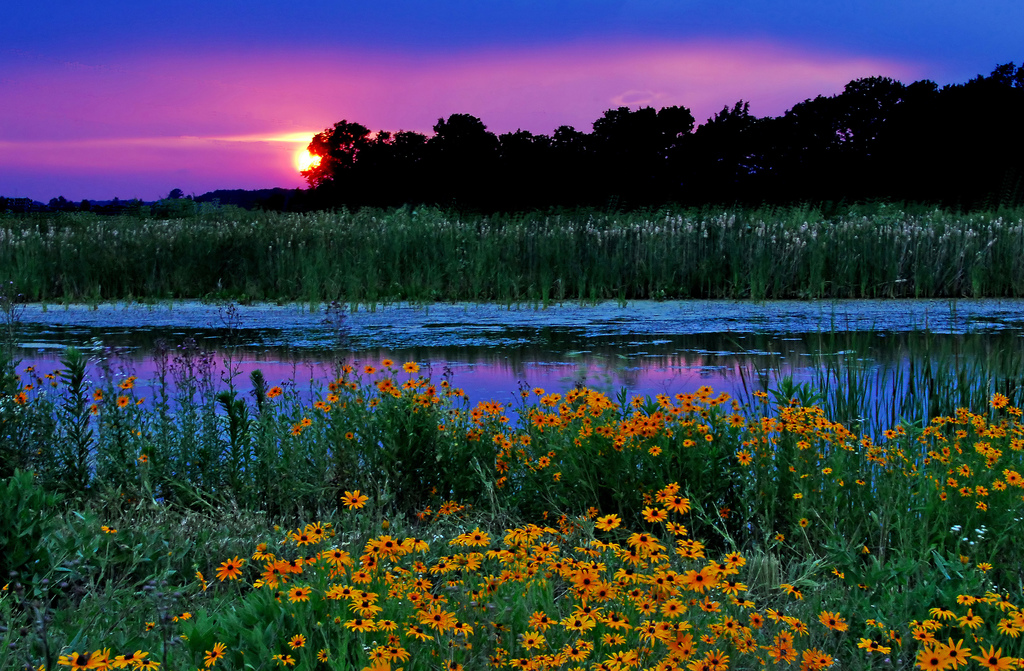![]()
.
Facing America’s Population Challenge By Frosty Wooldridge
|
Book Review: Facing the Population Challenge: Wisdom of the Elders by Marilyn Hempel In 21st century America, citizens and leaders of our country rush headlong and with great alacrity toward adding 138 million more people within 36 years, 2050, and a doubling of our current 319,000,000 (million) population to reach 625,000,000 (million) before the end of the century.
(The natural world provides humanity with peace of mind, body and spirit.) Photography by www.histabloid.com The run-up to that exponential growth won’t be pretty with accelerating water shortages, energy exhaustion and resource depletion. Our cities grow more compacted, polluted and gridlocked. Our quality of life rushes desperately off a demographic cliff. We force an unfortunate future upon our children. We obliterate the Natural World in our contaminated and toxic wake. We change our biosphere into a raging, chaotic tempest with no understanding of its outcome. While Americans and their leaders cannot “see” that far, nor do they prepare themselves in any way, their children face enormous predicaments discussed by the “Elders” of this book. For the most part, no one in America “talks” about the population explosion as if it will vanish on its own. Reality check: it won’t. It will grow and become unmanageable. It already shows itself catastrophic to the Natural World.
(The natural world offers humanity balance.) Photography by Adam Jones Since a picture equals a thousand words, this video equals a sobering glimpse into our future: “Immigration by the numbers—off the chart” by Roy Beck; www.NumbersUSA.org http://www.youtube.com/watch?v=muw22wTePqQ
After you view that video, take action by joining organizations that empower you via collective numbers: www.CapsWeb.org ; www.NumberUSA.org ; www.PopulationPress.org ; www.FairUS.org ; www.TheSocialContract.com Extremely intelligent men and women of history create a profound discussion on humanity’s fate within this book. We best listen. John Stuart Mill in the 1800s said, “There is room in the world, no doubt, for a great increase in population, supposing the arts of life go on improving, and capital to increase. But even if innocuous, I confess I see very little reason for desiring it. The density of population necessary to enable mankind to obtain all advantages both of cooperation and of social intercourse has been attained. “A population may be too crowded, though all be amply provided with food and raiment. It is not good for man to be kept at all times in the presence of his species. A world from which solitude is extirpated is a very poor ideal. Solitude, in the sense of being often alone, is essential to any depth of meditation or of character. Nor is there much satisfaction in contemplating the world with nothing left to the spontaneous activity of nature; with every rood of land brought into cultivation; every flowery waste or natural pasture plowed up, all quadrupeds or birds which are not domesticated for man’s use exterminated as he rivals for food, every hedgerow and superfluous tree rooted out, and scarcely a place left where wild shrub and flower could grow without being eradicated as a weed in the name of improved agriculture.” Mill speaks of the Natural World and our need for it. To many Americans, the wilderness is little more than a retreat from the tensions of civilization. To others, it is a testing place—a vanishing frontier where man can rediscover basic values. And to a few, the wilderness is nothing less than an almost holy source of self-renewal. But for every man, woman and child, the ultimate lesson that nature teaches is simply this: man’s fate is inextricably linked to that of the world at large, and to all of the other creatures that live upon it. Mill said, “If the Earth must lose that great portion of its pleasantness for the mere purpose of enabling it to support a larger, but not a better or happier population, I sincerely hope, for the sake of posterity, that they will be content to be stationary, long before necessity compels them to it. It is scarcely necessary to remark that a stationary condition of capital and population implies no stationary state of human improvement. There would be as much scope as ever for all kinds of mental culture, and moral and social progress; as much room for importing the “Art of Living” and much more likelihood of its being improved, when minds ceased to be engrossed by the “Art of Getting On.” Mill spoke those words back in the 1800s. Today, humans feature cities in excess of 36 million jammed and crammed impoverished souls. We humans watch 18 million of their species die of starvation annually. And yet, we propagate extravagantly by adding 80 million of ourselves, net gain, annually on our way from 7.2 billion to 10.1 billion within 36 years.
(We turned the natural world into 36 million-packed humans into our mega cities that create enormous pollution and loss of human connection with the Natural World. Results: devastating lives to billions around the world.) Photography by www.urbanscape.blogspot.com None of our actions make sense today, but we must learn from our elders to make way for a viable and sustainable future—before Mother Nature takes us by the hand, rather brutally and teaches us lessons in sustainable living. Book: Facing the Population Challenge: Wisdom from the Elders by Marilyn Hempel Publisher: Blue Planet United, Redlands, CA ISBN # 9780692212271 Cost: $14.95 paperback |
| Donate to Rense.com Support Free And Honest Journalism At Rense.com | Subscribe To RenseRadio! Enormous Online Archives, MP3s, Streaming Audio Files, Highest Quality Live Programs |
<


